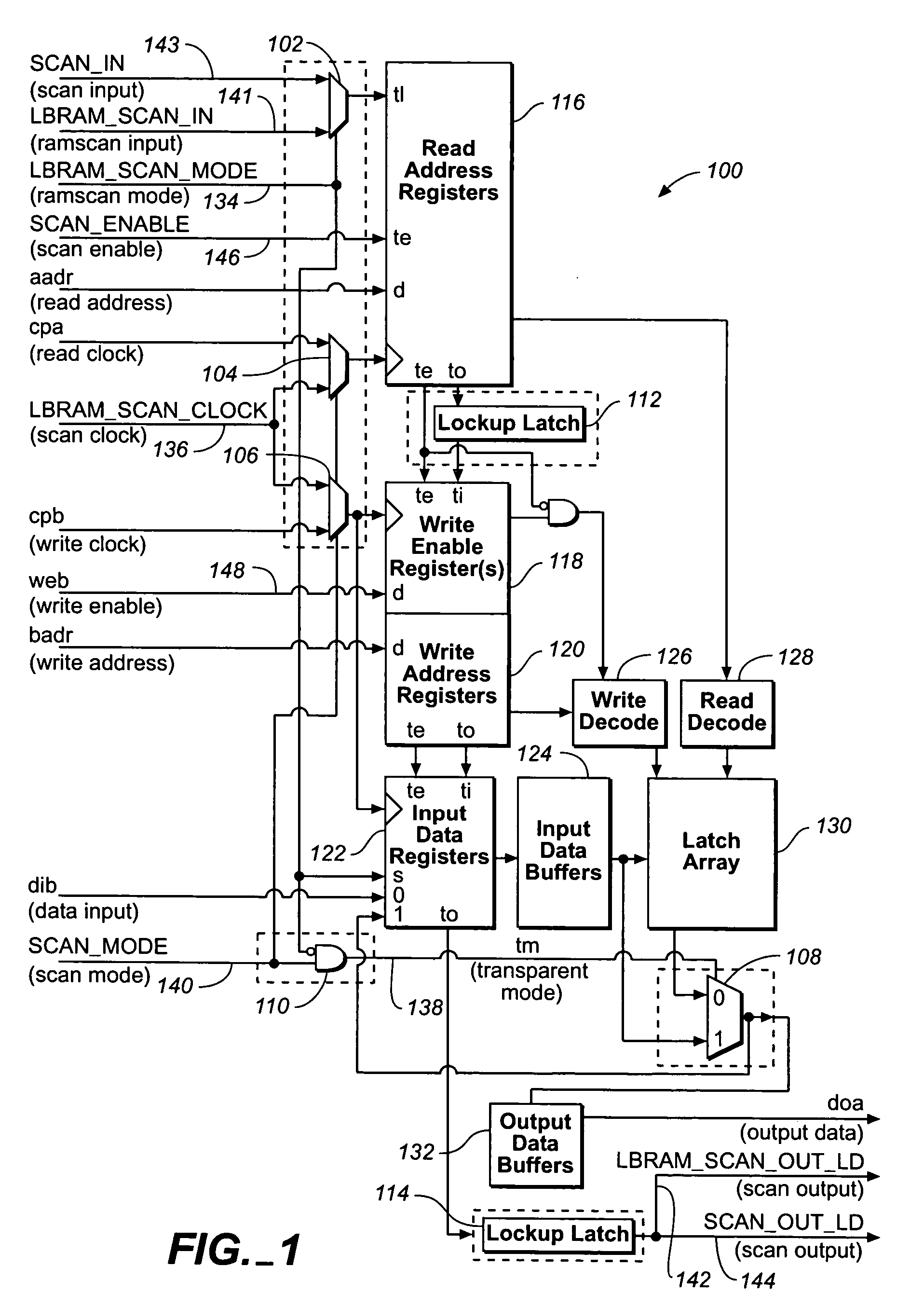Method and apparatus for high speed testing of latch based random access memory
a random access memory and latch technology, applied in the direction of digital storage, instruments, measurement devices, etc., can solve the problems of increasing the die area, affecting the test results, and causing the test results to be distorted, so as to minimize the skew of the scan enable
- Summary
- Abstract
- Description
- Claims
- Application Information
AI Technical Summary
Benefits of technology
Problems solved by technology
Method used
Image
Examples
Embodiment Construction
[0033] To facilitate testing of ASICs using automated test equipment (ATE), test logic is generally included in the ASIC circuit itself. The test logic usually functions only during testing and has no utility during normal operation of the ASIC in the field. Nevertheless, the test logic consumes additional die area in the ASIC, which results in fewer die manufactured on each wafer. The reduced wafer yield results in increased production costs. The automated test equipment is also expensive, consequently the testing time required for each ASIC further increases production costs.
[0034] As the use of latch based memory arrays in ASICS increases, there is an increased probability that faults will occur, necessitating more test logic. However, the added test logic for the memory arrays further increases the die area, disadvantageously reducing the wafer yield. Also, the additional testing required for more memory arrays increases the test time. To maintain high fault coverage without ex...
PUM
 Login to View More
Login to View More Abstract
Description
Claims
Application Information
 Login to View More
Login to View More - R&D
- Intellectual Property
- Life Sciences
- Materials
- Tech Scout
- Unparalleled Data Quality
- Higher Quality Content
- 60% Fewer Hallucinations
Browse by: Latest US Patents, China's latest patents, Technical Efficacy Thesaurus, Application Domain, Technology Topic, Popular Technical Reports.
© 2025 PatSnap. All rights reserved.Legal|Privacy policy|Modern Slavery Act Transparency Statement|Sitemap|About US| Contact US: help@patsnap.com



